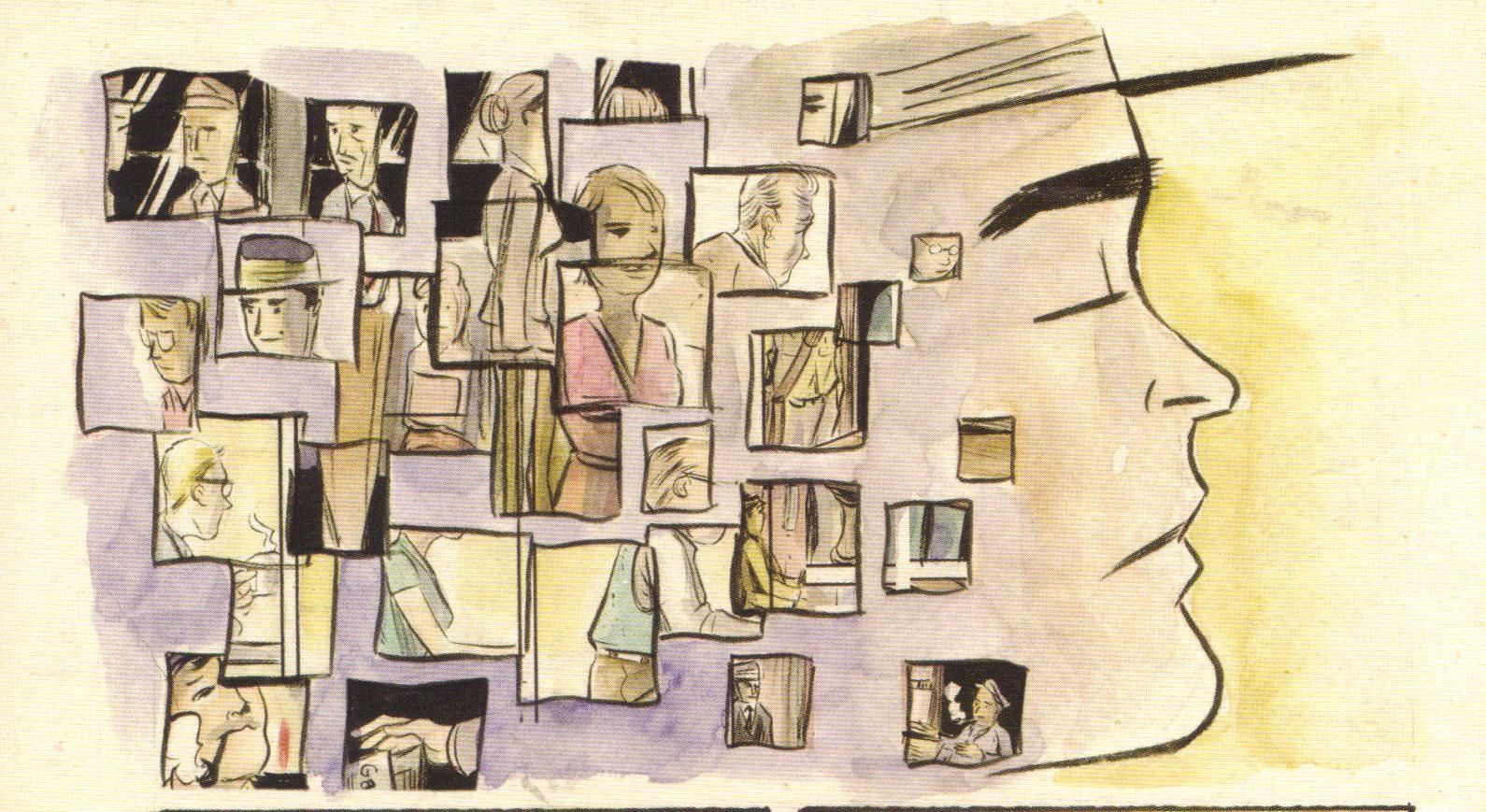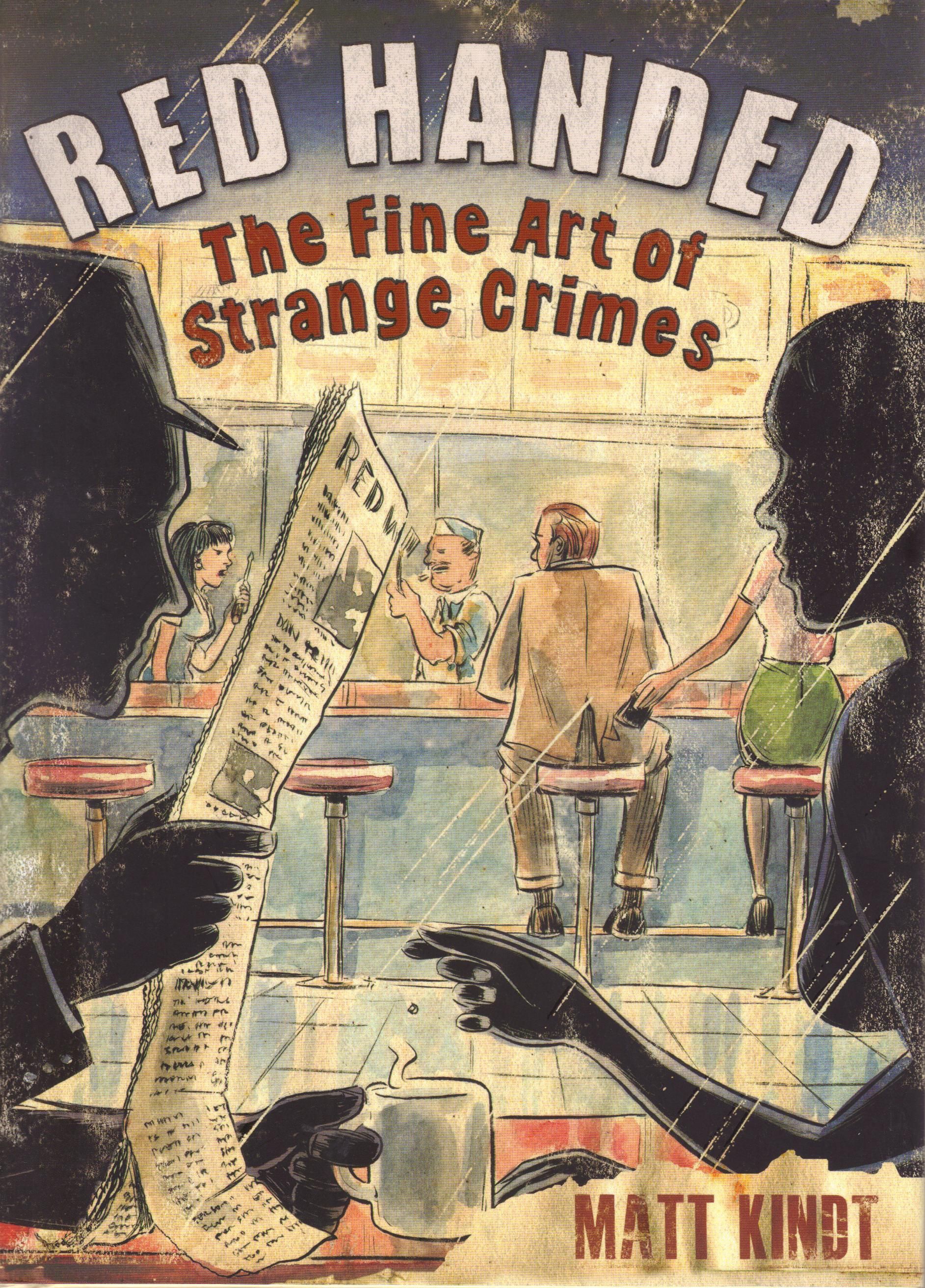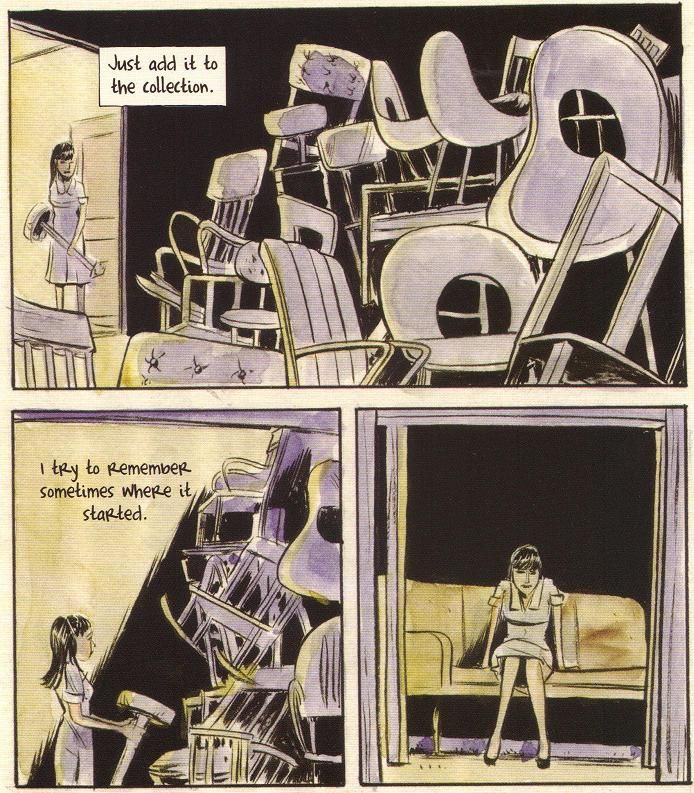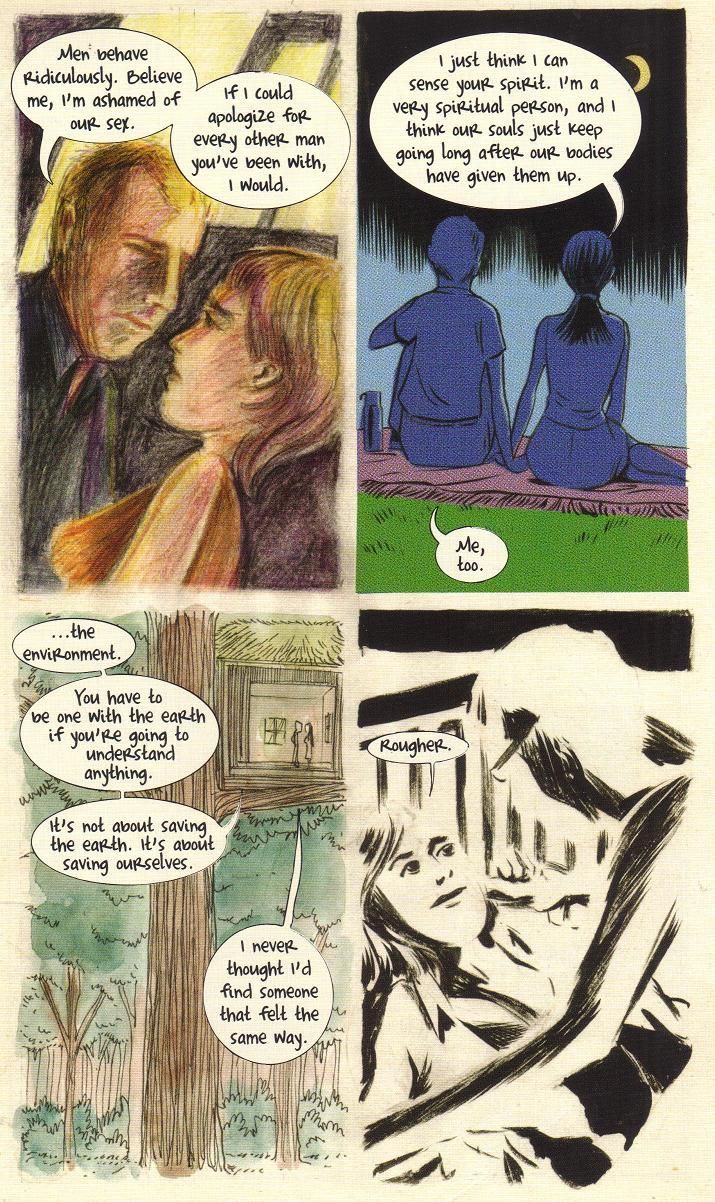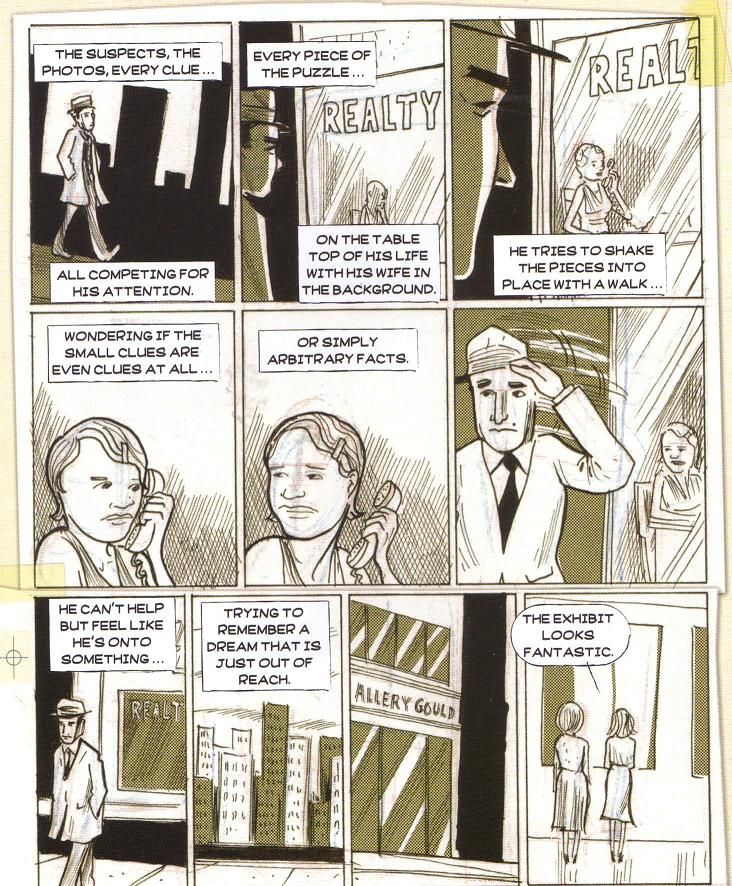Or, to put it more bluntly: WHY I HATE MATT KINDT!!!!
Last week First Second shipped Red Handed: The Fine Art of Strange Crimes, the latest graphic novel by Matt Kindt.
It costs $26.99 for 266 pages, and frankly, we should be happy they didn't charge twice as much, because it would still be totally worth it.
Let's consider Matt Kindt. Look at him on the dust jacket of this book (or in this picture), with his dashing salt-and-pepper hair and his sad yet mischievous eyes. He's very soft-spoken, ridiculously humble, and I HATE HIM SO MUCH!!!!! I mean, the dude just sits around and cranks out these giant slices of comics awesomeness. I didn't read his DC work, because he wasn't drawing it, but everything else the dude has ever done (and I've read almost all of it) is pure genius. He didn't write Pistolwhip, so it's not quite as good (although Jason Hall is a pretty good writer), nor did he write The Tooth (but it's still pretty good), but when the absolute worst thing you've ever done is probably an A- or at the very worst a B+ (that would be Revolver), you know you're hitting on all cylinders. Seriously, Matt Kindt, what the hell? He's just done yet another graphic novel to join two others as three of my favorites of this century, and his ongoing series - sure, why not do an ongoing series as well? - is kicking all kinds of ass. Just for fun, he wrote one of the best Black Widow stories ever a few years ago, probably with his left hand while he was writing and drawing something else with his right hand. Goddamn, Matt Kindt is a comics genius.
So you can probably tell I loved Red Handed. It's not quite as good as Super Spy, which is saying like it's not quite as good as having sex while you're hitting the World Series-winning home run and giving your acceptance speech for your Best Director Oscar, but what is, really?
Kindt decides to write a somewhat surreal detective story - in the most recent issue of Mind Mgmt, he did a brief detective story, so maybe he's had it on his mind recently. His character in this book, Gould, is a homage to Dick Tracy (who was created by Chester Gould) - he even resembles Dick Tracy. Gould lives in Red Wheel Barrow (yes, that's the name of the city), where we learn that the unsolved crime rate has plummeted - the actual crime rate hasn't changed, but Gould solves everything, often without even thinking about it too much. He's just that good. But suddenly he's confronted with a crime wave of, well, strange crimes. A woman steals chairs and stores them in her apartment. A man steals a Picasso and chops it into 100 pieces. A novelist steals road signs from across the city. A washed-up magician goes on a pickpocketing spree. A elevator repairman starts breaking them just so he can fix them. A man makes a fortune suing people. Some of these are obvious crimes, while others fall into a gray area. Is Sweeney, the man who provokes people into hitting him so he can sue them, committing a crime? Is the photographer who isn't all she seems committing crimes? Even as Kindt shows all these crimes or quasi-crimes, he's tying everything together - you see certain characters show up in crucial places, and it's fun to see how Kindt brings it all together. Meanwhile, at certain intervals, we get pages of black panels in grids with word balloons in them - two people are debating crime, what constitutes a crime, if there's such a thing as a "moral" crime, and other philosophical things. It's somewhat clear that one of the speakers is Gould, but Kindt leaves it mysterious as to which one is Gould and who the other person is and why it's so dark. It's an effective device, though, because as the one speaker points out, if no one gets hurt and no one is victimized, is it a crime? What is an accomplice and how far does that person's responsibility extend?
Gould lives in a world where the crime gets solved, which is why we think he's arguing for a more black and white view of the world. But we don't know until the very end if that's really him (maybe he's arguing as a Devil's Advocate) and what the circumstances are. When it's revealed, it's a devastating conclusion.
What makes the book so good is that conclusion, which Kindt slowly builds to and which is really a punch in the gut. Without it, the book would be a very clever mystery (or series of mysteries) but it wouldn't have the emotional resonance that it does. Gould and his wife, Annalyse, are at the center of the book, as Gould seems to care more about solving the crimes than he does about his wife. He's not cruel to her, just somewhat indifferent, and as we move through the book, we see how this upsets Annalyse even as Gould, the ever-observant detective, misses it. The relationship forms the crux of the grand scheme of the book, which isn't really about their relationship but makes Gould view it differently. I'm not going to give away anything more than that, because it really is cool seeing how Kindt slowly draws us in through the weird crimes and then hits us with some powerful, emotional stuff. The way he tracks the "criminals" - whether they are or not - is fascinating, too, because he provides enough backstory about all of them that we can understand why they're doing what they do. We might not agree with their choices, but we get why they make them. As with so many of his other works, Kindt almost effortlessly creates these fascinating, flawed characters who are totally unique yet completely believable. And then he puts them into this amazing plot, which makes them even more interesting.
I've often mentioned that Kindt's art is an acquired taste, but I should probably stop, because it's too good to imply that you need to get used to it to appreciate it. He remains a supremely inventive artist in terms of laying out the pages, and in this book, we get a lot of different things.
He tells some of the backstory in small strips that look ripped from the newspaper, and he adds short news briefs updating us on what happened after Gould "got his man." These strips are in black and white and are illustrated a bit more "simply," meaning that Kindt keeps the figures somewhat basic and even appears to have "forgotten" to erase the blue pencil lines from the original sketches. Meanwhile, in the main story, he gives us a few pages that look like old-school paperbacks from the 1950s, he does a wonderful fade from a photograph into the real-life situation being shown in the black and white, and he turns the book on its side toward the end to give us "newspaper-style" pages (which leads to the only problem with the book - some text is buried so far inside the crease where the pages meet that it's illegible). Kindt colors the book himself with watercolors, which allows him to change the tone, like when Terry is in Hawaii, without changing the look of the book too much. He changes the brightness of the colors not only in flashbacks, but in other places too, depending on the situation in which the characters find themselves. Toward the end, there's a tragic and gorgeous two-page spread in an autumn forest, and Kindt's impressionistic painting work makes the scene even more heart-rending. Kindt uses sound effects really well, too, which is just another bullet in his arsenal.
Red Handed is brilliant, an easy candidate for best graphic novel of the year, and it just shows that when it comes to comics, there aren't currently many better creators than Matt Kindt. If you haven't caught up with Mind Mgmt yet or you just want a complete story, do yourself a favor and pick this book up. If you don't end up hating Kindt as much as I do because he's just so damned talented, I might have to shun you. Matt Kindt = Genius is provable using MATH, and you just can't argue with MATH!

